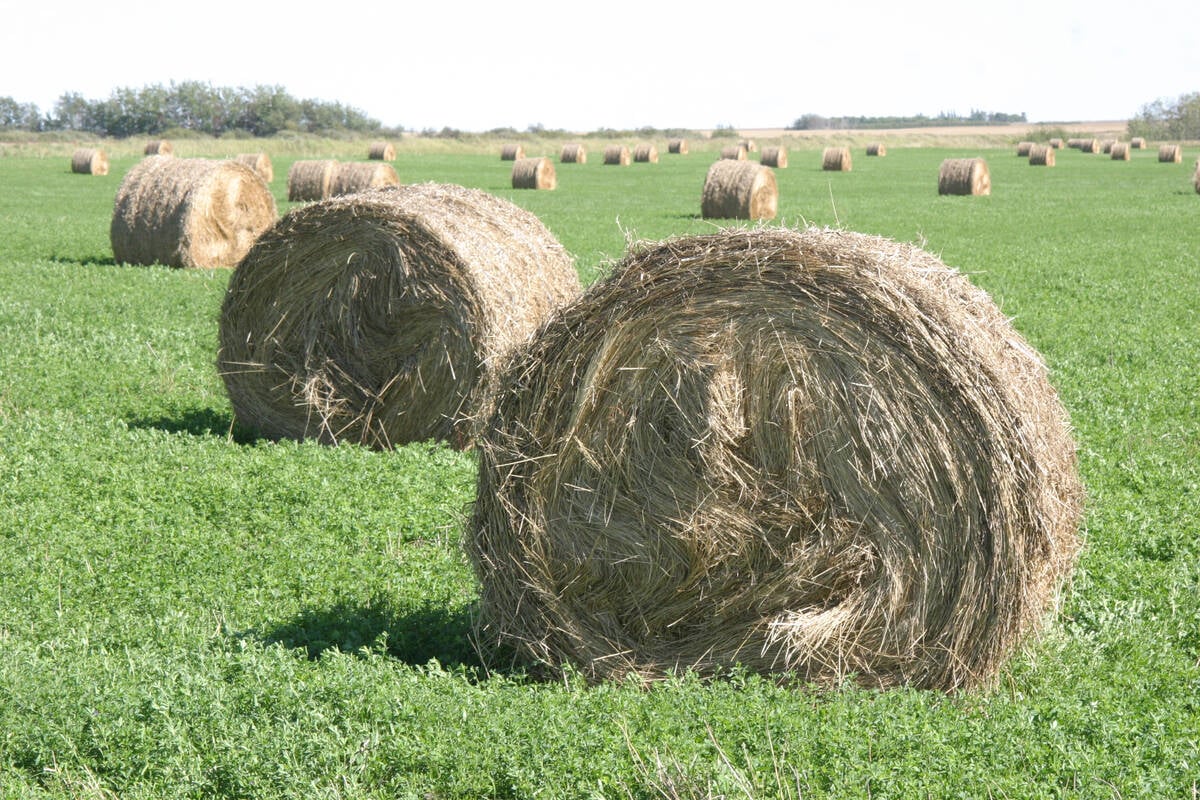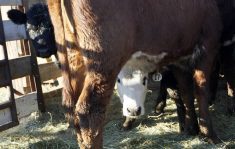NANTON, Alta. – The final race for Olympic gold may have been the
longest five seconds of Rocky Dallyn’s rodeo career.
Team ropers Dallyn of Nanton and his partner Murray Linthicum of
Glentworth, Sask., upset an American team by a fraction of a second
when they made that last ride at the Winter Olympics in Salt Lake City,
Utah, earlier this year.
“We just had to go as fast as we could and ended up making a real good
Read Also

Breaking down successful winter feeding into six steps
It’s that time of year when it is important to start planning for a cow herd’s winter feeding program. Here are six steps I think are necessary to consider when getting your feed tested.
run,” he said.
“It was just one of those runs where everything worked out the way it
was supposed to.”
Dressed in white hats and red shirts, they were part of the Canadian
Olympic team going head to head with the black-hatted Americans in
seven different rodeo events.
A timed event, the Olympic gold went to the two Canadians when they
roped their calf in 5.1 seconds compared to the Americans at 5.2. The
bronze medallists came in at 5.6 seconds.
This win was particularly sweet because Dallyn and Linthicum beat the
five-time world champion Americans Speedy Williams and Rich Skelton.
Dallyn holds his gold medal up to the kitchen window and says it looks
better in the sunshine. His basement is already full of trophies,
saddles, a box of silver buckles and a prized rifle won on the rodeo
circuit. But the heavy engraved medal with the Olympic rings set over a
bull may be the best prize of all. It also came with $7,000.
Rodeo was offered as a demonstration sport for three days during the
first part of the games before a packed crowd of 5,000 every night. The
last time an international fan base saw this kind of Olympic team
effort was at the Calgary games in 1988.
All competitors were selected in advance through a series of qualifying
events last season. Dallyn and Linthicum qualified when they won the
Canadian finals.
Five people in each event from Canada and the United States entered.
Team roping is a timed event consisting of two men, two horses and a
runaway horned calf racing out of a chute. Dallyn works at the hind end
as a heeler while his 15-year partner Linthicum is first out of the
chute roping the calf at the head.
Rodeo has been in Dallyn’s blood most of his life. Born in Prince
Albert, Sask., he and his family moved to Alberta in 1990 where his
father was involved in construction.
His father was interested in rodeo and started calf roping when he was
30. Dallyn started to learn team roping as a teenager.
Twenty years ago the sport was not popular, but over time it has become
a major event at Canadian rodeos. A team roping event in Red Deer
during the first weekend of May drew more than 1,000 competitors.
Team roping is not part of the Calgary Stampede but its growing
popularity has made it part of the rodeo card at 41 different events
across North America. It is a sanctioned event at the national finals
in Edmonton in November and appears at amateur rodeos.
“The last two years was the first time team roping was at the Canadian
finals in Edmonton. My partner has really been working at getting it at
more pro rodeos,” he said.
As a professional cowboy, Dallyn earns upward of $50,000 a year.
“I do OK and it’s something we like to do and I can make some money at
it.”
Nearly half goes for expenses as he and his wife Janice, a new mother
and barrel racer, crisscross the country hauling children, horses and
equipment. He figures he puts more than 100,000 kilometres a year on
the truck.
Team ropers do not take as much physical punishment as bull riders or
steer wrestlers, so many are able to stay competitive longer.
Now 34, Dallyn plans to remain a high level competitor for another 10
years barring serious injuries.
In the off-season he practises twice a week at Nanton or Okotoks, helps
run schools, and coaches for sold-out classes. He calculates there are
10,000 team ropers in Canada.
He also has a home business where he builds living quarters in
gooseneck trailers.















